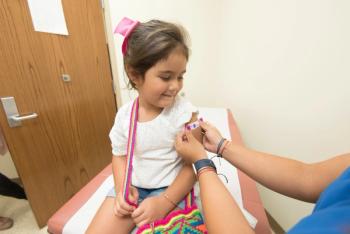
Study Reveals Previously Unmeasured PLABSI Burden in Acute Care Hospital
PIV infections are not as rigorously studied as CLABSIs, but they should be.
*Updated on 4/27/2018 at 3:45 PM EST
Although central line-associated bloodstream infections (
Although many PIVs occur each year in the United States, they receive far less attention than CLABSIs, and many of these infections are not publicly reported, according to a
"CLABSIs get more attention because they are publicly reportable and affect Value-Based Purchasing (VBP)," Amy Beth Kressel, MD, MS, FIDSA, FSHEA, medical director of Infection Prevention and Antimicrobial Stewardship at Eskenazi Health, and associate professor of clinical medicine in the Division of Infectious Diseases, Department of Medicine, at Indiana University School of Medicine, told Contagion®. "Hospitals are benchmarked according to their CLABSI Standardized Infection Ratio (SIR), which is essentially a composite observed/expected rate. CLABSI is a component of CMS’s Patient Safety domain, which in turn affects a hospital’s CMS reimbursement via the VBP program. So, “money talks.” But a patient can be harmed as much from a PIV-related bacteremia (which we’ve dubbed “PLABSI”) as by a CLABSI."
The CDC recently reported a
In the study presented at SHEA, an interdisciplinary team reported that they were able to reduce CLABSIs by 35% from 2014 to 2015 in an academic, acute care, safety net hospital, chiefly by reducing central line use. Despite this success, the Infection Prevention team was made aware of another growing issue in their facility—cases of bacteremia secondary to infected PIVs.
“To assess the scope of the problem, we developed a case definition for PIV-associated bloodstream infection (PLABSI): bloodstream infection associated with erythema, swelling, or pus at a current or former (within the prior 7 days) PIV site, without another identifiable source for bacteremia,” the authors of the poster wrote.
In a retrospective analysis, the team looked at cases of bacteremia at the hospital from 2014 to 2015 in order to identify PLABSI. The review, granted expedited approval by the Institutional Review Board, found that the majority (303) of the 340 cases of bacteremia occurred after 2 days of hospitalization.
“We identified 16 cases of hospital-acquired PLABSI occurring after day(s) 2 through 14 (mean after day 6),” the authors write. Although most of the cases proved to be uncomplicated, 1 of the individuals developed a psoas abscess—a relatively rare condition that is often difficult to diagnose—while another individual developed vertebral osteomyelitis, a rare bone infection concentrated in the spinal region. Both of the individuals needed 6 weeks of antibiotic treatment.
The team noted that they could not establish a PLABSI rate as they were unable to determine the number of PIV-days. However, the systematic retrospective review did provide them with insight into the burden of PLABSI in their facility which had been previously unmeasured. They noted that over the 2-year period, PLABSI was responsible for 3 cases of hospital-acquired methicillin-resistant Staphylococcus aureus (MRSA) bacteremia.
“Both CLABSI and PLABSI decreased from 2014 to 2015, showing that our reduction in central line days did not cause an increase in PLABSI. Our findings have led us to survey PLABSI prospectively and form an interdisciplinary task force to determine risks and PLABSI reduction strategies,” the authors write. According to Dr. Kressel, the team focused on PIV securement and chlorhexidine. To do this, the team attempted to "mirror" they way that they took care of central lines, which entails wearing a mask and using chlorhexidine for PIV placement instead of just alcohol.
"If we focus too narrowly on the very specific components of CMS’s Patient Safety domain, then we may miss other opportunities to reduce harm to patients. We need to remain vigilant to other risks to our patients," Dr. Kressel stressed. " One way to do this is to encourage an open-door through which staff can tell us if they see anything unusual. We learned about our PLABSIs because our astute Infectious Diseases pharmacists, who round with our Infectious Diseases physicians, told me that they kept seeing PIV-related infections. I also believe that machine learning or electronic surveillance could help us."
Newsletter
Stay ahead of emerging infectious disease threats with expert insights and breaking research. Subscribe now to get updates delivered straight to your inbox.


























































































































































































































































































































